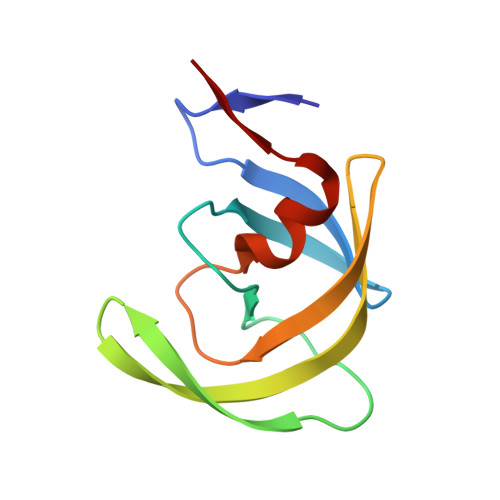Mutations in HIV-1 gag and pol Compensate for the Loss of Viral Fitness Caused by a Highly Mutated Protease.
Kozisek, M., Henke, S., Saskova, K.G., Jacobs, G.B., Schuch, A., Buchholz, B., Muller, V., Krausslich, H.G., Rezacova, P., Konvalinka, J., Bodem, J.(2012) Antimicrob Agents Chemother 56: 4320-4330
- PubMed: 22644035
- DOI: https://doi.org/10.1128/AAC.00465-12
- Primary Citation of Related Structures:
3T3C - PubMed Abstract:
During the last few decades, the treatment of HIV-infected patients by highly active antiretroviral therapy, including protease inhibitors (PIs), has become standard. Here, we present results of analysis of a patient-derived, multiresistant HIV-1 CRF02_AG recombinant strain with a highly mutated protease (PR) coding sequence, where up to 19 coding mutations have accumulated in the PR. The results of biochemical analysis in vitro showed that the patient-derived PR is highly resistant to most of the currently used PIs and that it also exhibits very poor catalytic activity. Determination of the crystal structure revealed prominent changes in the flap elbow region and S1/S1' active site subsites. While viral loads in the patient were found to be high, the insertion of the patient-derived PR into a HIV-1 subtype B backbone resulted in reduction of infectivity by 3 orders of magnitude. Fitness compensation was not achieved by elevated polymerase (Pol) expression, but the introduction of patient-derived gag and pol sequences in a CRF02_AG backbone rescued viral infectivity to near wild-type (wt) levels. The mutations that accumulated in the vicinity of the processing sites spanning the p2/NC, NC/p1, and p6pol/PR proteins lead to much more efficient hydrolysis of corresponding peptides by patient-derived PR in comparison to the wt enzyme. This indicates a very efficient coevolution of enzyme and substrate maintaining high viral loads in vivo under constant drug pressure.
Organizational Affiliation:
Institute of Organic Chemistry and Biochemistry, Academy of Sciences of the Czech Republic, Prague, Czech Republic.

















